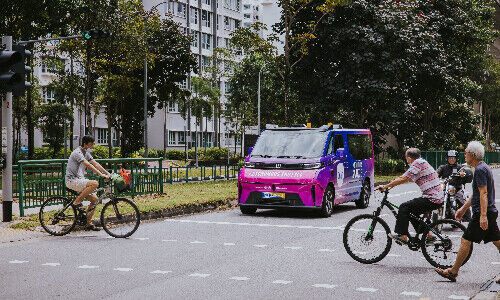Singapore Takes a Major Leap in Autonomous Mobility
WeRide and Grab have secured regulatory approval to deploy their full Ai.R fleet for testing across Punggol – a move that positions the district as the country’s first residential area set to host an autonomous shuttle service.
Singapore’s Land Transport Authority granted WeRide and Grab the green light to operate the entire Ai.R fleet along Punggol’s shuttle routes. The partners, which began preliminary testing in mid-October 2025, now plan to increase the number of test runs by up to four times before the end of the year.
This marks one of the most aggressive expansions of autonomous-vehicle testing in the city-state to date.
First Autonomous Shuttle Service
Ai.R – short for Autonomously Intelligent Ride – is jointly operated by Grab and WeRide as a public autonomous ride service. The fleet consists of 11 vehicles: ten WeRide GXRs with five passenger seats each and one Robobus with eight seats.
The initiative aims to make Punggol Singapore’s first neighbourhood with a dedicated autonomous shuttle service, with public passenger operations expected to begin by early 2026.
Enhancing Connectivity for Punggol Residents
The autonomous shuttles will link residential clusters to major amenities, including Punggol Coast MRT station, the bus interchange at Punggol Coast Mall, retail complexes, and healthcare facilities.
Throughout both the testing phase and the initial rollout of public rides, Safety Operators will remain onboard to provide real-time supervision and ensure operational safety.
Real-World Training for Reliability and Safety
Each test run generates real-world data that trains and localizes the vehicles’ AI driving models. The AVs analyze road infrastructure, traffic conditions, and the behavioural patterns of pedestrians and road users.
They are also calibrated to navigate Singapore’s famously unpredictable weather – from sudden downpours to intense sun glare – to guarantee consistent and reliable performance.
Mastering Complex Urban Environments
To achieve full operational readiness, the Ai.R fleet is trained across a range of real-world scenarios:
- Precision driving for smooth acceleration, deceleration, and obstacle avoidance
- Navigation of narrow residential roads, tight carpark turns, and complex intersections
- Seamless pick-ups and drop-offs with accurate, gradual stops
Equipped with LiDAR and camera sensors offering 360-degree vision and a 200-metre detection range, the vehicles can identify hazards in all weather conditions. This enables prompt, adaptive responses to dynamic urban environments.
New Autonomous Transport Workforce
A crucial pillar of the programme is talent development. GrabAcademy and WeRide are jointly training more than ten experienced Grab driver-partners as Ai.R Safety Operators. After completing classroom instruction and closed-circuit training, the first cohort has advanced to on-road sessions.
One trainee, Azman Bin Rahmad, highlighted the appeal of being part of Singapore’s autonomous mobility frontier, saying: «I’m excited to be among the first to train as an AV Safety Operator. I’ve seen firsthand how these vehicles operate and how our feedback directly enhances their performance.»
Milestone for Singapore’s Smart-Mobility Future
The expansion of Ai.R testing underscores Singapore’s broader ambition to integrate autonomous technologies into its public-transport ecosystem. For WeRide and Grab, the initiative represents a significant milestone in commercializing autonomous mobility in a dense urban environment – and could set the blueprint for deployments across Southeast Asia.
If successful, Punggol may soon become a showcase of how AV-enabled transit can enhance connectivity, resilience, and urban liveability in one of the world’s most advanced smart-city testbeds.












